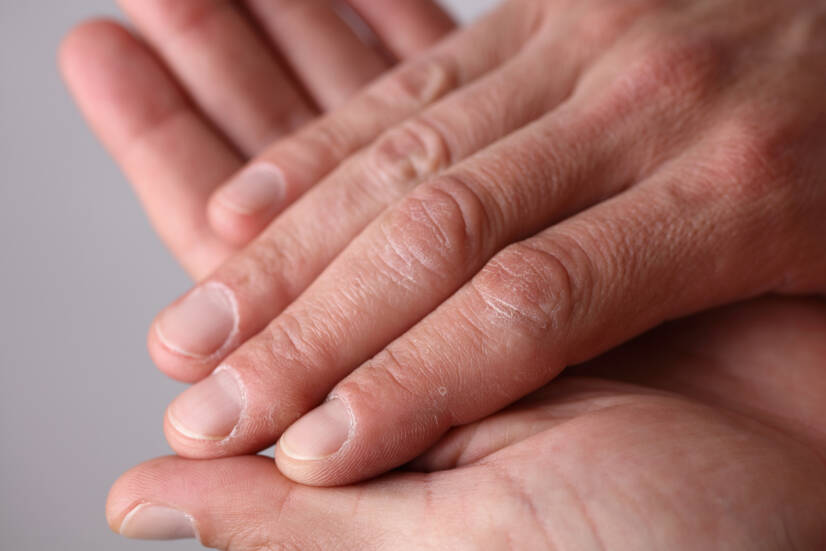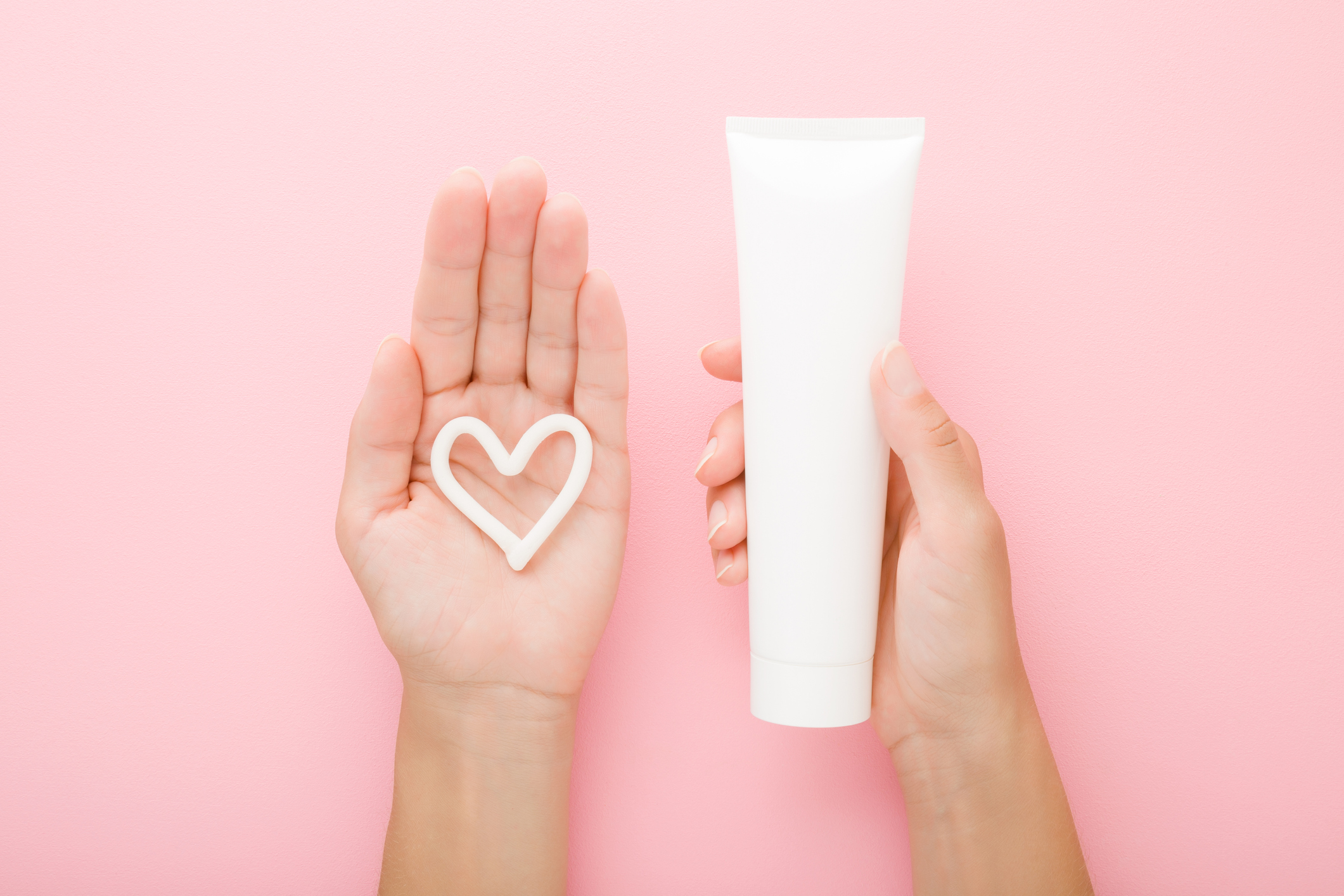- internimedicina.cz - Current view on the consumption and use of emollients
- edukafarm.sk - Dry skin - related problems and daily care of patients with skin disease
- solen.cz - Dry skin - possible causes and daily care options
- medicalnewstoday.com - What to know about antiseptics
How to care for hands? 3 steps: washing, disinfecting, creaming

Nowadays, many of us have a taste for beauty. Women, but increasingly men too, are getting manicures. We crave perfectly manicured nails. But what about the skin on our hands? It is often said that our hands say a lot about us. Let's take a look together at a few tricks to ensure that the skin on our hands looks nice.
Article content
Recently, hand sanitizing has become our daily routine. We have to sanitize our hands before entering the store. When we get home, we use hand sanitizer.
We wash our hands much more often with hand sanitizers and antimicrobial soaps. The skin on our hands is literally suffering.
It's said that a doctor sanitizes his hands about 50 times during the day. Have you counted how many times you sanitize your hands?
In addition to disinfection, cold and frost also contribute to the drying of the skin of the hands. A typical example of a situation where these two factors complement each other is leaving the store.
Many of us disinfect our hands when we leave the store and immediately expose our skin to the cold weather. This is why many of us experience problems in the winter.
For this reason, we should wear gloves in the winter to protect our hands from the cold.

See also the following information:
We don't even realise that frequent hand washing with soap and water, rinsing with very warm to hot water and then drying our hands results in chronic irritation and drying of the skin on our hands.
In many cases, painful cracks can develop. This increases the risk of infection with micro-organisms.
The biggest mistake in hand skin care is the combination of frequent hand washing with soap, rinsing hands with very warm to hot water and using an alcohol-based hand sanitiser.
Improper hand washing repeatedly disrupts the protective fatty layer of the skin, which protects against drying out the skin.
This makes our skin more sensitive to external influences. The skin of the hands becomes dry, loses elasticity, roughens, cracks and peels.
Most of us wear rings and bracelets on our hands. But how many of us take them off when we wash our hands?One of the important steps of good hand hygiene is to remove rings and bracelets before washing your hands. These adornments reduce the effectiveness of hand washing and hand sanitizing.
Hand skin care can be summarized in three steps...
3 steps of hand care
The basics are proper washing, disinfecting and creaming.
1. Hand washing
In general, we should wash our hands in the following situations:
- when you get home
- after travelling on public transport
- after using the toilet
- when preparing and eating food
- after contact with a sick person
- touching the face, eyes, mouth
- if we are sick and have symptoms such as coughing, sneezing or sniffling
In a study at a selected petrol station, British researchers found that only 34% of men and 64% of women washed their hands before leaving the toilet.The Heidelberg researchers studied the behaviour of men and women in public toilets. They found that 11% of men did not wash their hands at all before leaving the toilet. Only 51% of men washed their hands with soap and water. Women did better. 3% of women did not wash their hands at all and 82% of women washed their hands with soap and water.
What are the principles of good handwashing?
It takes about 40 to 60 seconds to wash our hands properly. It consists of the following steps:
- Wet your hands with warm (not hot or very cold) water.
- Then apply approximately 1 ml of liquid soap.
- Rub your hands in circular motions from palm to palm.
- Rub the right palm of your right hand against the left back of your hand with interlaced fingers.
- In the next step, rub your palms together with interlaced fingers.
- Close the fingers of one hand in the palm (creating a 'lock') and rub against the other palm.
- Rub the thumb of your left hand in the closed palm of the other hand in a circular motion and vice versa.
- Using the joined fingers of the right hand, spread the soap in a circular motion on the left palm and then vice versa.
- Rinse with lukewarm (never hot or very cold) water.
- Dry your hands with a disposable towel.
The dryers we like to use are not suitable for drying our hands. Ironically, they cause the spread of microorganisms to the surrounding area.
The most common hand washing mistakes can be summarised as follows:
- short rinsing under running water
- rinsing hands without using soap
- insufficient amount of soap
- using soap on dry hands
- failure to follow correct hand washing techniques
Frequent use of antibacterial or disinfectant soaps should be avoided in the home. Better alternatives are regular soaps or special handwashing creams.
It is advisable to use products without alkaline soap ingredients, which can irritate the skin of the hands.
Did you know that....When we wash our hands with soap, the skin barrier of our hands is restored after 2 to 3 hours?
Oil soap is also available in the market which contains special oils and detergents. It is designed to wash hands frequently. It retains water in the skin and helps to relieve itching.
If we don't have soap and water on hand, we can use disinfectant gels or solutions.
2. Hand disinfection
It takes about 20-30 seconds to properly disinfect our hands. The hand disinfection process is similar to hand washing:
- In the first step, scoop up a palmful of disinfectant solution and apply to dry hands.
- Rub your hands palm to palm.
- Run the palm of your right hand over the back of your left hand with interlaced fingers and then vice versa.
- Then disinfect the interlocked fingers of the right hand against the left hand and then vice versa.
- Enclose the fingers of one hand in the palm of the other hand and rub against the palm of the other hand.
- Using the palm of the right hand, disinfect the thumb of the left hand in a circular motion and then vice versa.
- With the joined fingers of the right hand, disinfect the palm of the left hand in a circular motion and then vice versa.
- Allow the product to dry.
Did you know that...Using alcohol-based products on wet hands reduces their disinfecting effect. For this reason, they should be applied to well-dried hands.
There is a wide range of hand sanitisers on the market. They can be in the form of solutions or gels. Alcohol-based products are very popular.
They are characterised by a quick effect, dry quickly on the skin and do not leave an unpleasant sticky feeling. The disadvantage is that they can locally irritate the skin.
What are the effects of ethanol on the skin?
It has a germicidal effect at concentrations above 60%. It has the highest disinfecting effect at a concentration of 70%. It is most commonly used at a concentration of 60%. At this concentration it is only intended for limited areas. When applied to the skin at concentrations above 50% it can cause local irritation. It is recommended to apply ethanol to larger areas of the skin at concentrations below 40%.
Disinfectants containing emollients and protectants are currently available on the market. These protect the skin from drying out.
3. Hand creaming
Just as we take care to wash and disinfect our hands every day, we should also think about hand creaming. After frequent use of disinfectant and antimicrobial soaps, our skin needs hydration and soothing.
In general, we should regularly re-apply hand cream, in other words, moisturize, after each hand washing, disinfection and before going out in cold weather.
Hydration from the inside is also very important. Therefore, even in winter, we must not forget to drink regularly.

Creams and ointments
Creams should contain ingredients that restore the skin barrier, regenerate and moisturise the skin. We should avoid using creams that contain perfumes and preservatives.
Moisturising creams should contain urea. Urea is a natural factor of the stratum corneum. It increases the elasticity of the skin. Low concentrations of urea are used to moisturise the skin.
Preparations containing urea are not suitable for swollen wounds. Skin irritation may occur after their application to such areas.
Ceramides are another essential ingredient in moisturisers. They help in restoring the fatty barrier of the skin. This reduces the loss of moisture in the skin layers. Various cosmetic products containing ceramides are available in the market.
There are cosmetic products available in the market that contain petroleum jelly. This is useful for re-lubricating dry skin.
Vaseline with calendula is also a popular combination. This cosmetic product provides elasticity to the skin, soothes it and protects it from dryness. It forms a protective layer on the skin which moisturizes and lubricates the skin.
If cracks have already appeared on the skin of the hands, we should choose products that contain vitamin A or petroleum jelly. One alternative is creams and ointments that contain calendula.
How can we prepare calendula ointment at home?
To prepare calendula ointment we will need:
- 4 handfuls of calendula flowers
- 500 g shea butter/coconut oil/fat
Melt the salve/oil/lard in a water bath. Then put the calendula flowers in it. Let the hot salve come to the boil. Stir and let the mixture stand overnight. The next day, heat the mixture again and strain it through gauze into a clean, sealable container.

Emolliencia
Emollients form an oil film on the skin. This film prevents increased evaporation of water from the skin surface, providing hydration and lubrication. They are mainly used in the treatment of dry skin. However, their effect is short-lived.
For this reason, they must be applied to the skin more frequently. They are applied either as a pre-ointment or as a bath additive.
Emollients have many beneficial effects on the skin:
- softening
- softening
- moisturising
- regenerative
- smoothing the skin
- help restore a broken skin barrier
- adjusts the pH of the skin
Oils
Oils play an important role in hand skin care. Almond oil is very popular and effective. It is mainly used for its soothing and regenerating effects.
Almond oil can be used on dry and sensitive skin prone to redness, itching, peeling or cracking.
Another effective oil is jojoba oil. It is used to moisturize the skin of the hands and also strengthens brittle nails.
Effects of Jojoba Oil:
- moisturizes the skin
- helps heal wounds and scratches
- creates a natural barrier against the harmful effects of external factors
- is hypoallergenic
- has antibacterial and antifungal properties
In conclusion, we summarise the principles of hand care
- Do not use cosmetics that contain preservatives and alcohol, as these substances dry out the skin.
- Use cosmetics that contain urea, ceramides, jojoba and almond oil, vitamin E or shea butter.
- Follow a drinking regime.
- Apply hand cream after each hand washing or sanitizing, cleaning or before leaving the house.
- Always wear gloves if it is cold outside.
Interesting resources
Related










